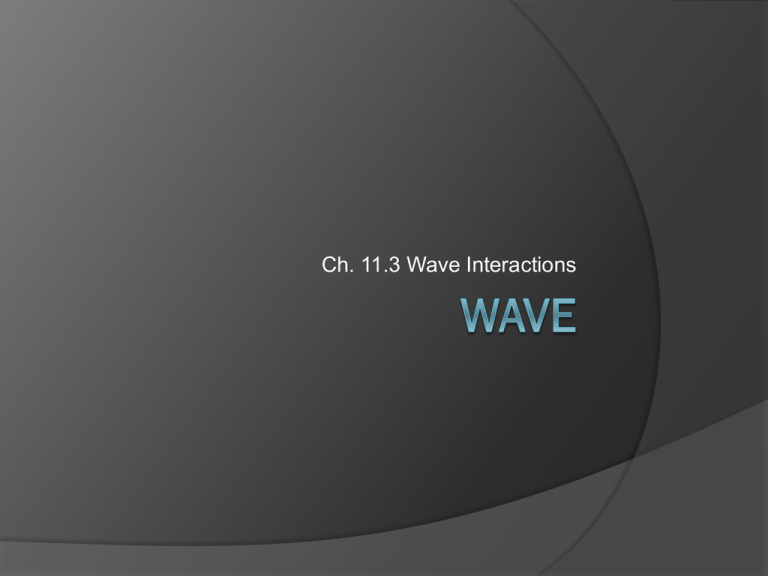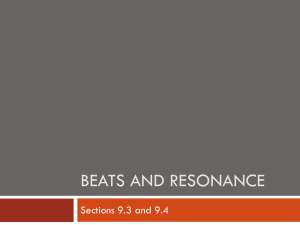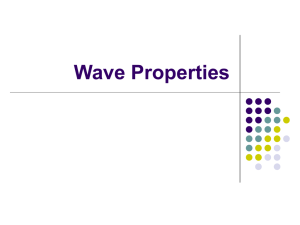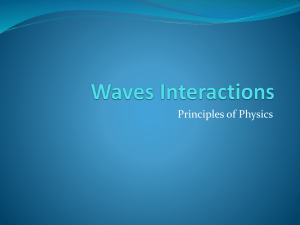Wave - Sharyland ISD
advertisement

Ch. 11.3 Wave Interactions Section 11.3 Objectives Describe how waves behave when they meet an obstacle, pass into another medium, or pass through another wave. Explain what happens when two waves interfere. Distinguish between constructive interference and destructive interference. Explain how standing waves are formed. Reflection Reflection is the bouncing back of a wave as it meets a surface or boundary. At a free boundary, waves are reflected. At a fixed boundary, waves are reflected and inverted. Diffraction Diffraction is the bending of a wave as it passes an edge or an opening. When waves pass the edge of an object or pass through an opening, such as a door, they spread out as if a new wave were created there. Refraction Refraction is the bending of waves as they pass from one medium to another. All waves are refracted when they pass from one medium to another at an angle. Because light waves bend when they pass from one medium to another, the straws look like they are in two pieces. Wave Interference Interference is the combination of two or more waves that exist in the same place at the same time. Two different material objects can never occupy the same space at the same time. Waves, however, can pass through one another. When this happens, the waves form an interference pattern. This ripple tank demonstrates the interference of water waves. Types of Interference Constructive interference – displacements in the same direction. The method of summing the displacements of waves is known as the superposition principle. When these two wave pulses meet, the displacements at each point add up to form a resultant wave. This is an example of constructive interference. Types of Interference Destructive Interference – displacements in the opposite directions. Complete Destructive Interference – two pulses equal in amplitude but opposite in direction, they completely cancel each other. In this case, known as destructive interference, the displacement of one pulse is subtracted from the displacement of the other. Interference of Light waves Interference of light waves creates colorful displays. You can see a rainbow of colors when oil is spilled onto a watery surface. Spilt oil on watery asphalt These colors are due to interference of light. Beats Sound waves of slightly different frequencies will interfere with each other and produce loud and soft sounds called beats. Sound waves at slightly different frequencies produce beats. The number of beats per second corresponds to the difference between frequencies. Standing Waves Standing wave is a wave from caused by interference that appears not to move along the medium and that shows some regions of no vibration (nodes) and other regions of maximum vibration (antinodes). The points at which two waves cancel are nodes. Between two adjacent nodes where the amplitude is the greatest, these points are called anti nodes. Section 11.3 Summary Waves bouncing off a surface is called reflection. Diffraction is the bending of waves as they pass from one medium to another. Refraction is the bending of waves as they pass from one medium to another. Interference results when two waves exist in the same place and combine to make a single wave. Interference may cause standing waves.







